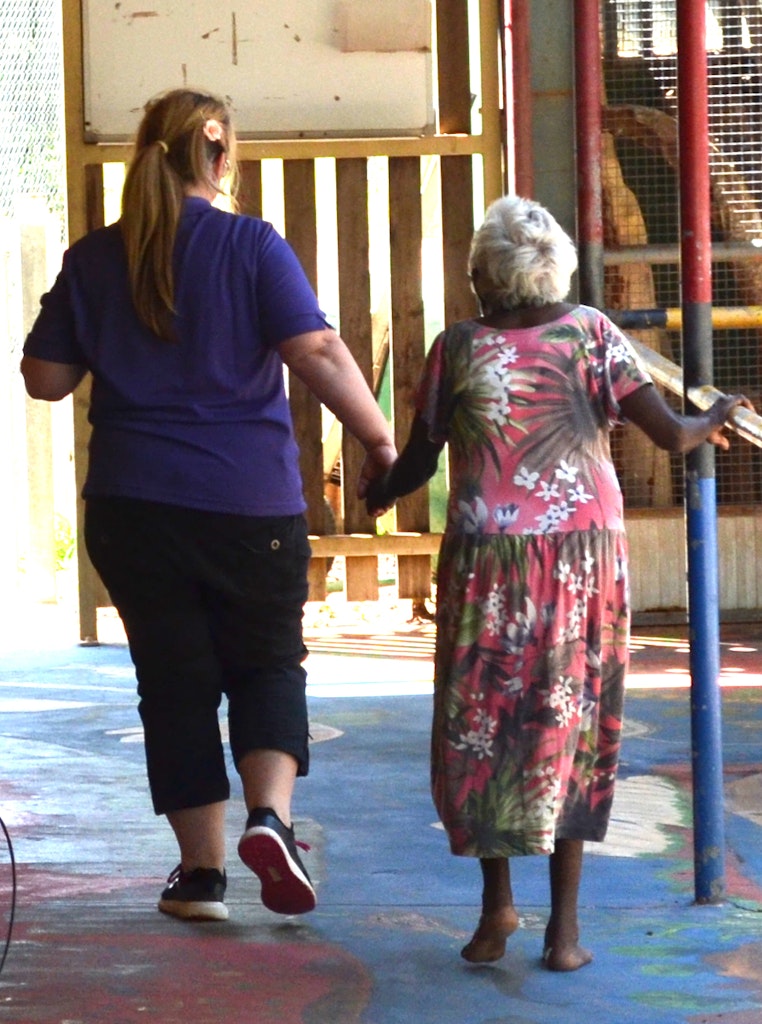An age old problem in rural areas – part 3
The third and final part of our three-part series highlights a variety of staffing issues faced by rural providers and customers.

It takes a particular person to handle the responsibilities that life in rural and remote areas requires (Photo: Juniper)
According to Government figures, more than 240,000 workers are employed in direct care roles in the aged care sector. Of these, 147,000 work in residential facilities, and 93,350 in community outlets. The percentage of the workforce located in non-metropolitan areas is around one third according to the 2012 National Aged Care Workforce Census.
With an ageing population and more Australians living longer, by 2050, Australia’s aged care workforce is expected to grow to around 827,100.
However, despite it being a growing industry, the sector still has difficulties in attracting and retaining staff.
Working in aged care can be very physical, involve managing challenging behaviours and performing unpleasant personal care and domestic tasks. These aspects alone make it an unattractive career choice for some and the issue is more pronounced in rural areas where there is a smaller workforce.
And there are other challenges. Covering a distance of nearly 3,600km Western Australia aged care provider Juniper operates from Kununurra in the Kimberley region to Albany in the Great Southern. Bill McDonald, Juniper Executive Manager Human Resources says despite close proximity to convenient services and infrastructure in large urban centres such as Geraldton in the Midwest or Albany to the Great Southern region, the remoteness of some care facilities may discourage potential employees, particularly those considering relocating from other parts of the State, or from interstate.
“The cost of living, access to services, available amenities, education and career opportunities for themselves or members of their family, all play a part in the decision making process when a person is considering whether to live and work away from large urban centres,” he says.
And then there’s the pay.
Dr Judith Anderson, Senior Lecturer, School of Nursing, Midwifery and Indigenous Health, Charles Sturt University highlights in a lot of rural areas, many people working in aged care facilities are on the minimum wage.
Furthermore, as the providers are often relatively smaller than urban providers, employees don’t have the benefits of working for a larger organisation such as union bargaining power, and many of the providers in rural areas simply can’t afford to pay their staff more anyway.
“If we are not paying the staff well, we are not respecting the work they do, and we’re not respecting the elderly,” she says. She feels this as an issue the industry needs to address. “Poorly paid people leads to reduced customer satisfaction and quality of care – and this undermines the whole system,” says Dr Anderson.
Access to training and career opportunities
While online training offers flexible options for training, Dr Anderson feels it’s not always appropriate and the student/trainer relationship is lost. As an example she points out trainers can’t see the faces of students to see whether they’re understanding what they are been taught. Some subjects simply don’t lend themselves to online training anyway.
Attending physical training sessions leads to additional costs for the provider, and more so in rural areas. Staff working in rural areas may have to allow for a 4-8 hour drive either side of their training sessions. “That’s 3 days of their time they need paying for along with transport costs, and 3 days of their shifts needing to be covered,” highlights Dr Anderson.
In addition, for an ambitious rural worker keen to climb the aged care career ladder, opportunities are few and far between. “They may have to wait for someone to even die before they can move up,” says Dr Anderson. “So staff will look elsewhere.”
Dr Anderson highlights there is then an issue for providers who are spending the money training staff, only for them to leave because there are more opportunities elsewhere. Then the provider has to spend more money training another member of staff.

Multitasking in a multi-purpose service provider
One of the benefits of multi-purpose services (MPS) in a smaller
community is all the people are in one place. For instance, a visitor
may see their grandparent in the aged care residency and then their aunt
in the hospital.
However, Dr Anderson says working in a MPS can be a daunting for some
people. While they are working primarily in the aged care part, they
may find they are called in to help the emergency department. “People
are worried what’s going to walk through the [emergency] door –
sometimes they are not the most pleasant of people,” she says.
This can raise further issues about staff safety and security.
Studies have also found MPS’s often have more nurses and fewer care
staff than residential care facilities, and they are perceived to focus
on medical aspects rather than social aspects.
Different aspects of rural life
Aged care advocate Marie Berry who lives in rural Victoria feels
because rural areas have limited staff to pick from they take whatever
they can get, with staff ‘floating’ between care facilities. While she
says most staff follow the professional codes of conduct, she feels on
occasions in smaller communities, these are sometimes blurred. She
believes on some occasions, personal biases and historic issues between
local people have led to residents being uncomfortable in their care
home or carers experiencing selective admissions for loved ones. With
few residential care options in the area, people have had no alternative
but to be placed in a home further away from loved ones.
On a separate issue, Dr Anderson highlights the rural aged care
workforce is generally made up of women, usually married to farmers, and
this can affect staffing levels at certain times of the year. “If
something is happening on the farm, such as harvesting or shearing,
people want the holiday to help out on the farm,” she highlights.
Anne Young, Director of Care Services, Country Mile Home Care, a
small aged care provider offering a wide variety of home care and
transport services for older people living in rural WA, says it does
take a particular person to not only provide aged care services, but
also handle the responsibilities that life in rural and remote areas
requires.
In the more remote Kimberley region, where Juniper operates several
services, Mr McDonald says ‘the wet’ presents considerable challenges to
some people who might find the long periods of heat, humidity and
rainfall oppressive.
Plus he highlights accommodation availability may be an issue,
something which Juniper is currently addressing at its facilities in
Derby and Fitzroy Crossing by building staff housing.
“Despite the significant challenges, there are many benefits to
living and working way from major urban centres,” he says. “Overall, the
staff in our rural and remote areas enjoy a high level of teamwork,
camaraderie and job satisfaction without the hustle and bustle of a big
city.”























